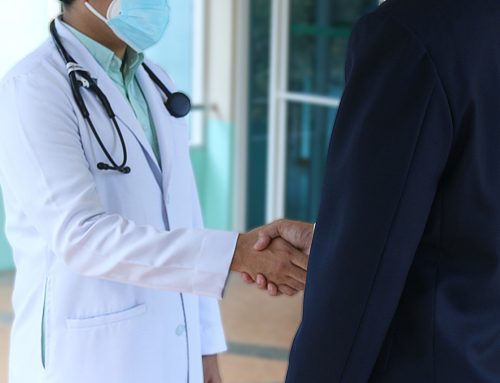Can I fly after shoulder surgery?
Will shoulder surgery prevent you from travelling?
I often treat patients that live abroad who are understandably keen to return to recover from surgery in the comfort of their own homes. Some patients wish to travel to recover from surgery in a lovely location abroad. Other patients have to travel overseas for work. A question I get asked often is when is it safe to fly after surgery?
There are no absolute rules to answer this question, but there are several factors you may wish to consider that will help you make your decision. Discussing these issues with your doctor to ensure your safety and reduce the risk of complications is essential.
Factors to consider are:
- What type of surgery are you having?
- How long is your flight?
- What type of seat will you be travelling in?
- How much assistance will you need?
What type of surgery are you having?
The type of surgery you have will affect how much pain you may experience and how much mobility you will be allowed.
In broad terms, the operations on the shoulder joint are either ‘arthroscopic’ or ‘open’. Arthroscopic cases are commonly known as keyhole surgery. These involve 1-2cm incisions around the shoulder joint to permit surgical instruments to be passed into the joint.
In open cases, the incision is longer, which may be more uncomfortable. Although the arm is placed in a sling, it can still be painful in the first few days, and you need to be prepared for this if you are travelling.
Depending on the type of surgery you have, you will need to protect your shoulder accordingly. If you have an arthroscopic subacromial decompression or frozen shoulder surgery, you are encouraged to move your arm as much as possible. Suppose you have an arthroscopic rotator cuff repair, shoulder instability repair, or shoulder joint replacement. In that case, you will need to be more careful to protect the repairs and cannot move your arm away from the side of your body. This will make travelling more difficult.
What type of anaesthetic are you having?
Most of my patients have a light general anaesthetic with a regional nerve block. It is possible to do the surgery with the patient awake. However, most patients choose to be asleep. The regional nerve block is used so that the first 24-36 hours after surgery are completely pain-free.
This means that the whole arm is numb, but it has no strength at all. The arm must be supported in a sling; otherwise, it would flop around without control. Complications with regional anaesthetics are rare. However, the nerve that supplies the diaphragm is sometimes affected, and one half of the diaphragm is temporarily paralysed.
This does not usually affect the patient; however, the cabin is pressurised in an aircraft, making it difficult to breathe comfortably, so it would be better to wait for the nerve block to wear off before getting on a plane.
Deep Vein Thrombosis
You sit for a prolonged period during a flight with your knees bent. In this position, the leg muscles are not contracting as they usually would when walking. The blood vessels are bent at the knee. These factors can lead to blood pooling in the legs and an increased risk of blood clots forming in the leg. This is known as deep vein thrombosis or DVT for short. The risk of a DVT increases with longer flight times. It would help if you got up for short walks during the flight to prevent clotting.
DVT is a recognised risk after lower limb surgery or if prolonged periods of immobilisation are needed, such as in some abdominal or pelvic operations. Patients are regularly prescribed anti-coagulant medication to prevent clot formation. Patients can walk straight away after shoulder surgery, so anti-coagulants are not routinely given. However, if you are planning a long-haul flight, it might be advisable to take a single dose as a preventative measure. This must be discussed with your doctor beforehand.
Which type of seat?
Aeroplane seats in economy class are pretty narrow, and after surgery, your arm will be in a sling, so it may not be easy to get comfortable. If it is a short flight, this might be ok, but it can become more painful during a long flight, so it may be better to wait a few days until the pain is under control. If your airline allows you to choose your seat, I would advise taking a seat where your arm is less likely to get knocked by other passengers or the food trolley. Some patients prefer a window seat with the operated arm next to the window, so it is protected. Some people prefer an aisle seat so they can get up and walk around more easily. I would suggest not having your operated arm closest to the aisle. You may want to consider booking an extra seat, so you have more room, or if your budget allows, travel in business class so that you can recline comfortably.
The other thing to remember is that aeroplane toilets are tiny, and manoeuvring yourself with a sling can be tricky. Wear comfortable, loose-fitting clothing that is easy to take on and off. Jogging bottoms with the elasticated waistband and front fastening tops would be ideal.
Airport Assistance
Airports can be busy and congested. There is often a lot of walking between the check-in desk and the plane departure gate. Queues for security and passport control can be long. Ideally, it would be best to have a travelling companion with you. You may wish to consider booking wheelchair assistance ahead of time and skip the queues altogether.
When Should I Contact My Doctor?
If you have any increased pain or discomfort while flying, it is crucial to contact your doctor as soon as possible. Shoulder pain may be aggravated by air travel and can prolong recovery times. It is better to check for reassurance rather than ignore a complication that may be easy to sort out early on.
Summary
You can fly relatively quickly after surgery. As a rough guide, the NHS and Civil Aviation Authority suggest waiting:
- 1-2 days after arthroscopic (keyhole) surgery
- 10 days after major surgery such as joint replacement surgery
As with anything in life, being prepared well ahead of time and anticipating difficulties makes things run smoothly.
Here’s a checklist that may help you plan:
- Check with your doctor when it is safe to fly after your specific surgery
- Book a good seat
- Travel with a companion
- Wear comfortable clothes
- Consider wheelchair assistance
- Use an easy bag to open for your personal items
- If it is a long flight, get up and take regular short walks
- Contact your doctor if you have any concerns after the flight
Ultimately each patient I see has unique needs, and I would discuss their specific circumstances with them before committing to booking a flight.
Get in touch today if you have any questions about a shoulder issue or when I can fly after shoulder surgery; we are here to help.
Ms Susan Alexander is a Consultant Orthopaedic Surgeon and President of the Independent Doctors Federation.
She specialises in all shoulder conditions, including frozen shoulder, rotator cuff tears, dislocations and arthritis. Based in London, she practises at Fortius Clinic and King Edward VII’s Hospital. Ms Alexander is highly experienced in minimally invasive (keyhole) shoulder surgery and is known for her meticulous, patient-centred and holistic approach.
She focuses on accurate diagnosis, bespoke treatment planning, and ongoing support throughout recovery. Learn more about Ms Susan Alexander here.









